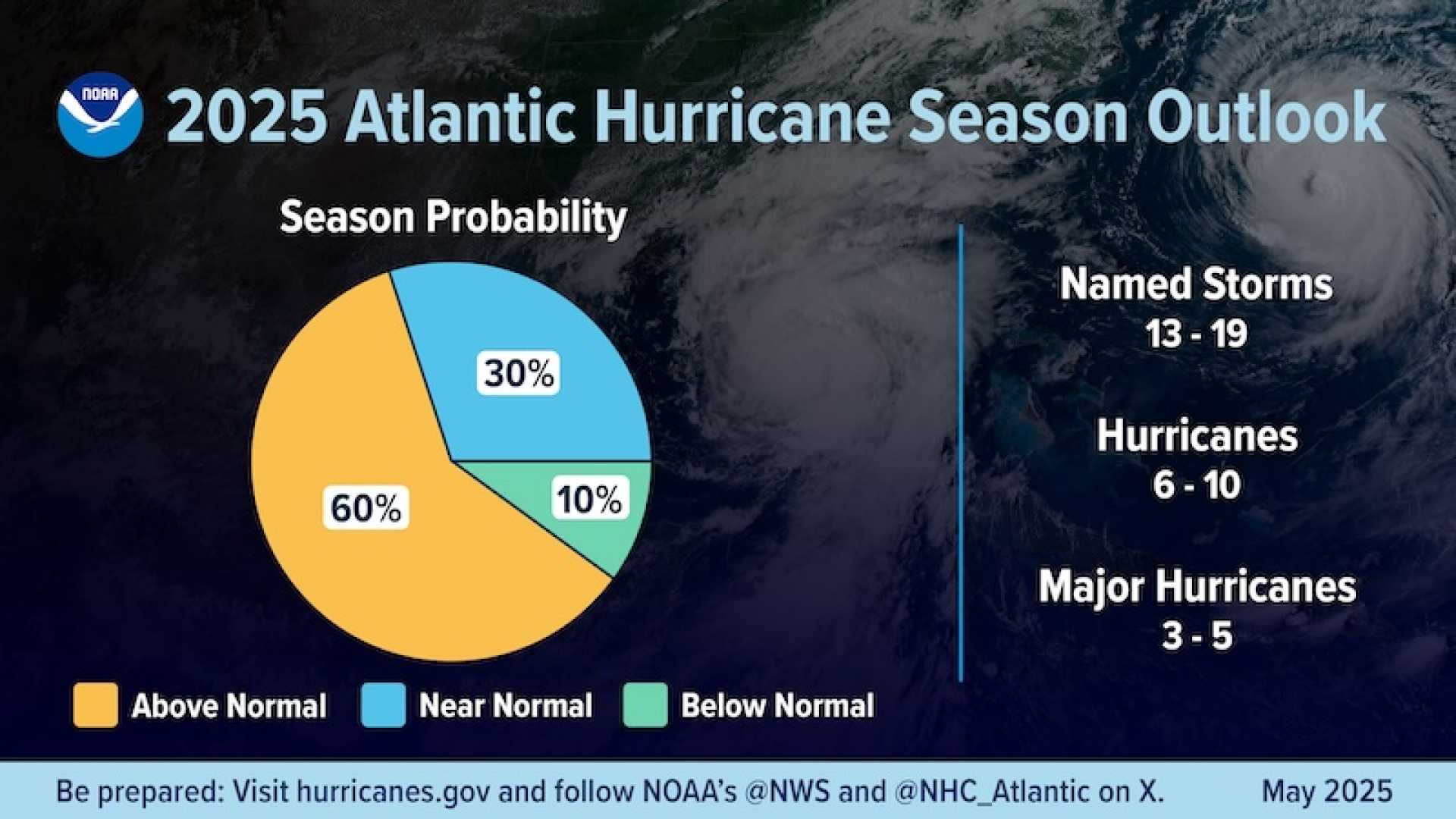News
Hurricane Season Begins with Forecasts for Active Atlantic Storms

CHARLESTON, S.C. (WCSC) – Sunday marks the official start of the 2025 Atlantic hurricane season, which runs through Nov. 30. The National Oceanic and Atmospheric Administration (NOAA) predicts a 60% chance of an above-normal season, expecting 13 to 19 named storms this year. Named storms are those that achieve maximum sustained winds of 39 mph or greater.
Out of the expected storms, NOAA forecasts that six to 10 could develop into hurricanes, with three to five of those classified as major hurricanes. A major hurricane is defined as a Category 3, 4, or 5 storm, with Category 3 hurricanes reaching wind speeds of 111 mph or more.
The Colorado State University (CSU) also predicts an above-average season, with their forecast indicating 17 named storms, nine hurricanes, and four major hurricanes. These predictions come in light of typical parameters, where an average season sees 14 named storms, seven hurricanes, and three major hurricanes.
Meteorologists believe that neutral conditions could contribute to increased hurricane activity this season. Unlike El Niño, which can hinder hurricane development through increased wind shear, a neutral pattern might foster more storms. Furthermore, warmer ocean temperatures and a potentially more active West African Monsoon are expected to contribute to storm formation.
“This outlook is a call to action: be prepared,” said NOAA National Weather Service Director Ken Graham. He advised communities to take steps to ensure safety and readiness as storms approach.
In South Carolina, Governor Henry McMaster has designated May as Hurricane Preparedness Month. The state’s Emergency Management Division emphasizes that South Carolina is highly vulnerable due to its coastal geography, with six counties bordering the Atlantic and over 200 miles of coastline.
Residents are advised to identify their evacuation zones ahead of any mandatory orders and to prepare their homes against hurricane impacts. Safety tips include inspecting roofs, checking hurricane shutters, and ensuring insurance coverage is sufficient. Creating a hurricane preparedness kit is also recommended to facilitate quick evacuations.
The World Meteorology Organization maintains a list of rotating hurricane names that repeats every six years. This year’s list remains the same as 2019, with the exception of the name Dorien, which has been retired due to the damage caused by Hurricane Dorien. The new D-name this year will be Dexter.
In the previous year, the Atlantic season saw 18 named storms, of which 11 became hurricanes, including five major hurricanes. Tropical Storm Debby significantly impacted the Lowcountry in August, causing nearly a foot of rainfall in Charleston and Savannah within 24 hours.
Emergency officials emphasize the importance of creating a storm plan now. In Bay County, Florida, Jennifer Wilburn, an Emergency Specialist, urges residents to prepare emergency kits and secure their homes. “If you can, go to a friend’s house, maybe 30 miles away, or up to 2 hours,” Wilburn advised.












